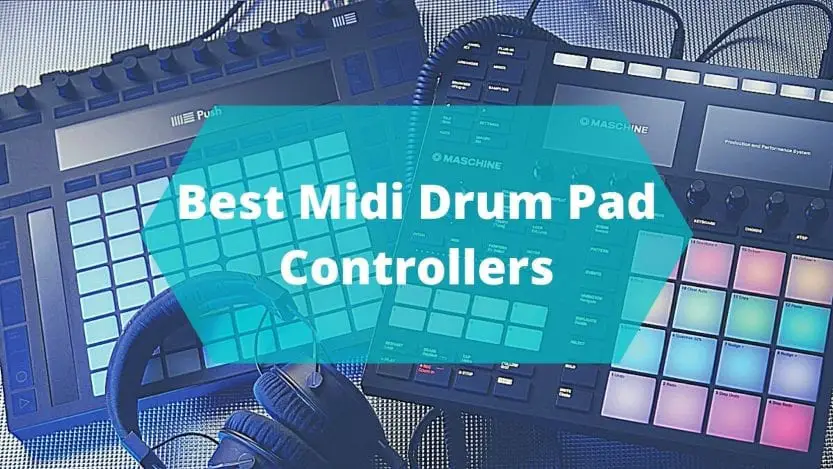Many years ago, musical creativity and innovation were highly restricted with their instruments. In the late 1980s, musicians and producers were able to develop MIDI or musical instrument digital interface as a way to connect different electronic instruments and computers to create, edit, and record new music.
During this time, it was only professional musicians and producers that were able to get hold of MIDI controller pads as they are quite expensive at the time. A few decades later, the device has become accessible to a lot of musicians.
At first, the device was intended to be struck or tapped using drum sticks to generate a signal that would play a sound. These devices used to have the same size and shape of real drums; however, the surface was much more firm to absorb shock. In the early days, most of the drum pads were assembled, much like the classic set of drums, and were played using the fingers so that there is little need to use force to create music.
With the help of the advancement of technology, these instruments have become less expensive and integral to the overall performance of an artist. Soon the pads became smaller and offered more features. MIDI drum pad controllers do not need to be expensive for you to get high-quality features that will allow you to explore different styles of music. In today’s world, there are viable options that will cater to your needs.
Here are 10 Best MIDI drum pad controllers:
1. Akai MPD 226
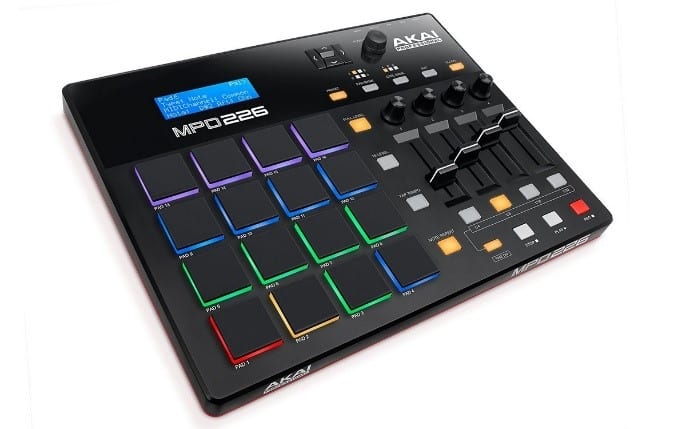
The Akai MPD60 is one of the original drum pad controllers that dominated the 90s. It was essentially the go-to drum pad controller of the decade due to its high-quality features. Today, Akai is still providing us with great MIDI drum pads through the Akai MPD 226. The MPD 226 offers a modernized version of its predecessor by enhancing all of its features while keeping its nostalgic options to its core.
The smooth black casing houses the 16-pad setup with rainbow backlights and, with its smaller interface, allows the device to be transported on a whim. The Akai MPD 226 also contains 4 faders, knobs, and switches that round out the entire device.
Our Conclusion: If you want to have the classic feel while still keeping up to date with the modern style, then this MIDI drum pad is for you.
Pros:
- Nostalgic feel
- Loaded with features
- Portable
- Pads are soft to use
Cons:
- Pads sometimes trigger twice
- Not newbie-friendly
2. Arturia BeatStep
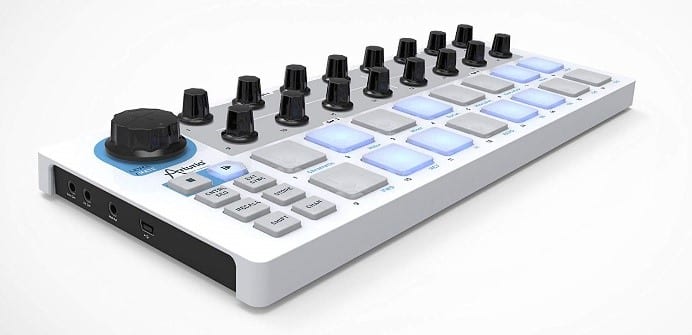
The Arturia BeatStep is rich in features, and its versatility is one of its many highlights. This drum pad controller has 16-pads with 16 assignable encoder knobs. Coming at a very lightweight of only 2.5 pounds, Arturia BeatStep has earned a lot of praise due to its versatility allowing performers and instrumentalists to play with the tunes.
Together with its 16 modifiable presets, this controller even has a software bundle that can be downloaded through the brand’s official website. While the device can still improve upon its size, it can deliver a fantastic ergonomic layout that makes it easier for its users to play.
Our Conclusion: Those who are after versatile features with a lot of options should try this drum pad controller for its wide variety of choices.
Pros:
- Very versatile
- Lots of options and features
- Controls are easy to understand
Cons:
- Setup takes time
- No manual
3. Ableton Push 2
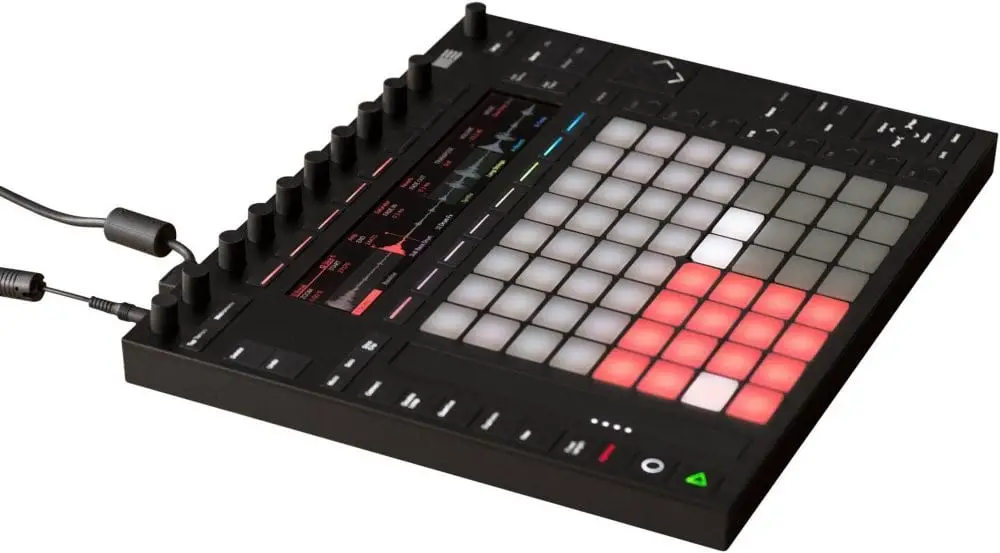
This second-generation MIDI drum pad is one of the most popular and in-demand product from Ableton. Its 64-pad setup allows a wide array of melody and sequences for instrumentalists. Ableton Push 2 is a stark improvement of its predecessor by having wobble-free buttons that are much more responsive.
It also has a brighter backlight that allows visibility for its users. It will certainly take days before you can take your hands off of this instrument.
Our Conclusion: One of the most creative MIDI drum pad controllers to grace the market right now, much of its success comes from its capabilities to do mixing and editing all in one package.
Pros:
- Easy to use
- Lots of improvisation
- Intuitive interface
Cons:
- A bit pricey
- Might encounter some registration issues
4. Keith McMillen QuNeo 3D
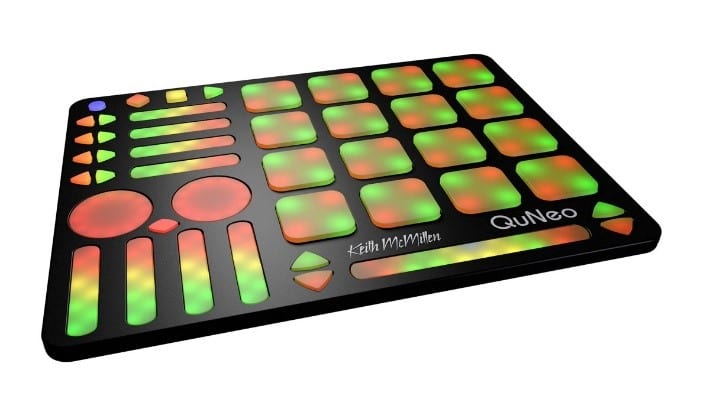
If you are looking for a portable MIDI drum pad, then the Keith McMillen QuNeo 3D should be on your list. It is about the same size as an iPad and only a few centimeters thick. While it can be a fragile device, it is also proving to be a top contender for many devices in the market today.
The device boasts 27 separate touch controls that are well-lit with LED lights. Producers who are always on the road should pick this one up for sure.
Our Conclusion: An easy to use, lightweight Midi drum pad controller that offers a lot of features.
Pros:
- Very light
- Very affordable
- Sensitive pads
Cons:
- Generic drivers
- Wonky USB connectivity
5. Native Instruments Maschine Mikro MK3
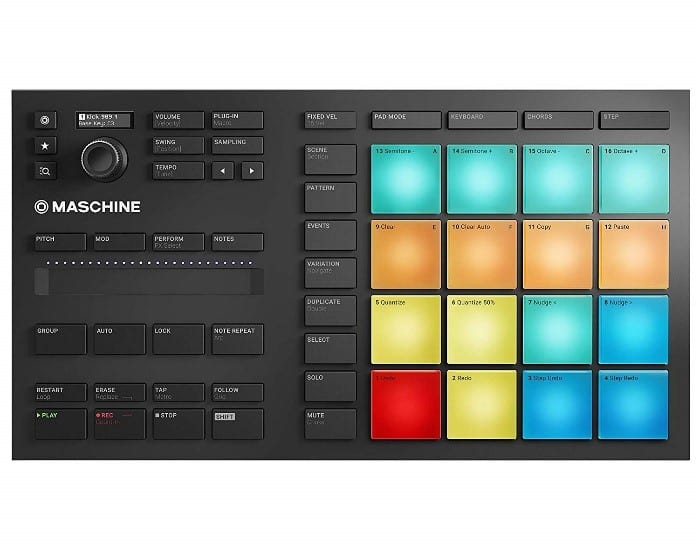
When it was announced in 2018, the Native Instruments Maschine Mikro MK3 took the world by storm due to its price. At a lower price point, this MIDI drum pad was set up to bring a wide array of features at a very affordable price. It has 16 sensitive backlit pads with 1 universal encoder knob. The best part is that it is also compatible with a lot of computers nowadays and is powered by USB.
The lower price made this device more accessible to beginners while providing them with the tools needed for them to start. However, editing may need the use of a computer, unlike other brands on this list.
Our Conclusion: Overall, the Mikro MK3 offers more for entry-level instrumentalists and producers than the seasoned ones.
Pros:
- Great for beginners
- Affordable price
- Very versatile
Cons:
- Compatibility issues
- Instructions need improvement
6. Novation LaunchPad Pro
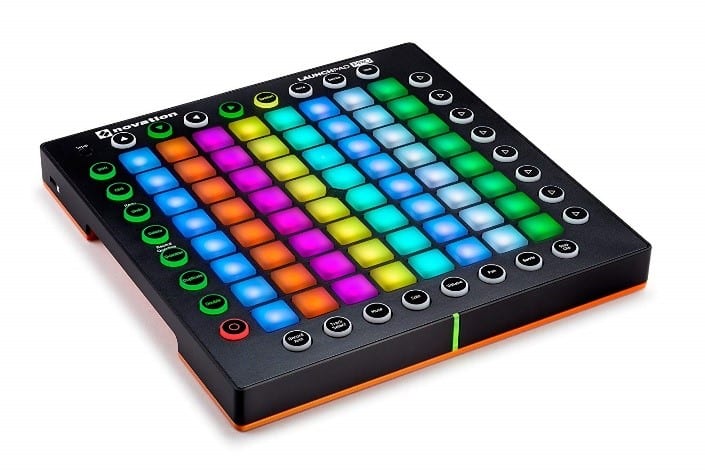
Speaking of affordable alternatives, if you want to have most of the features of the much superior Ableton Push 2 without spending a lot of cash, then the Novation LaunchPad Pro would likely catch your attention. The device retains much of its features from the original while providing a more convenient aspect.
It has a wide variety of modes include a Scale Mode and a Piano Mode. Although the device is quite bigger and heavier than the original, it is still portable enough. Its durable coating helps protect it from external factors making it a good option for live performance.
Our Conclusion: The Novation LaunchPad Pro offers versatility and is an excellent alternative to many brands on this list.
Pros:
- Very affordable
- Satisfying sounds and visuals
- Good introductory instrument
Cons:
- Lack of instructions
- Sensitivity adjustments need work
7. Livid Instruments Base II
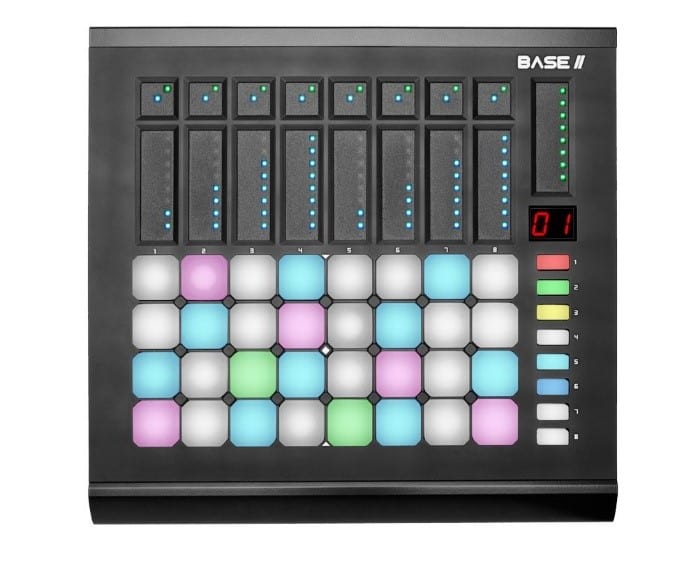
While many pad controllers today offer tons of features, there are also others than go for the aesthetics. The Livid Instruments Base II is an attractive drum pad controller that can be customized. It prides itself on its versatility to integrate almost, if not all, music software that is available in the market today.
The pads and buttons are made of silicone, and the brightly lit series of colors burst into life when played, and the colors spark even better depending on how hard you press. This portable MIDI drum also has two parameter knobs, one fader, and a wide range of MIDI output that will let you spend hours and hours just making music. The Livid Instruments Base II is also quite portable as it can easily hook up to a mobile device and begin adding more beats to the app.
Our Conclusion: If you want to go big, this device can still challenge the bigwigs on this list. It also boasts of a very durable casing making it one of the best drum pad controllers for 2020.
Pros:
- Lightweight
- Fluid controls
- Compatible with almost all devices
Cons:
- Way too many colors
- Sensitivity issues
8. Akai Professional LPD8
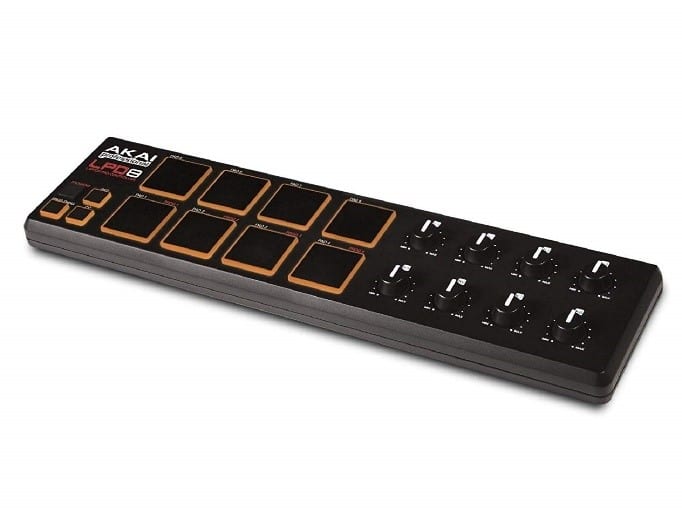
If you find yourself on a tight budget but still want to have a MIDI drum pad that almost does it all? Then the Akai Professional LPD8 should be enough to satisfy your needs. This tiny drum pad is small enough to fit inside a backpack.
It has 8 backlit pads and knobs that heavily resemble the other pads from this brand. At a very low price, the quality of the drum pad is not compromised. The pads and knobs still feel like they come from the same material and do not come off as a cheaper version of the more professional Akai product.
Our Conclusion: Akai Professional LPD8 lean towards the simple MIDI drum pad befitting for those who want to have the most basic functions.
Pros:
- One of the most affordable brand
- Very easy to use
- Solid unit
Cons:
- Setting up takes time
- Sensitivity issues with pads
9. IK Multimedia iRig Pads
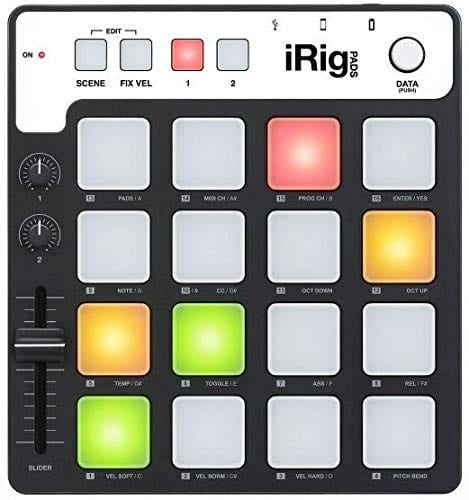
Aimed at iPad or iPhone musicians, the IK Multimedia iRig Pads has 16 backlit pads with colors ranging from green, orange to red, two knobs, a fader, and several more features. This easy to use controller is also very convenient as it is fully compatible with Mac, PC, and even Android.
The extremely small-sized controller is very portable; hence you can bring it anywhere you go. You can take it with you for gigs or if you are at home and you want to produce music.
Our Conclusion: Musicians who are always on the go should keep this drum pad controller in their priority list.
Pros:
- Very portable
- Lightweight
- Easy setup
Cons:
- Features are found in other much cheaper controllers
10. Akai MPD18
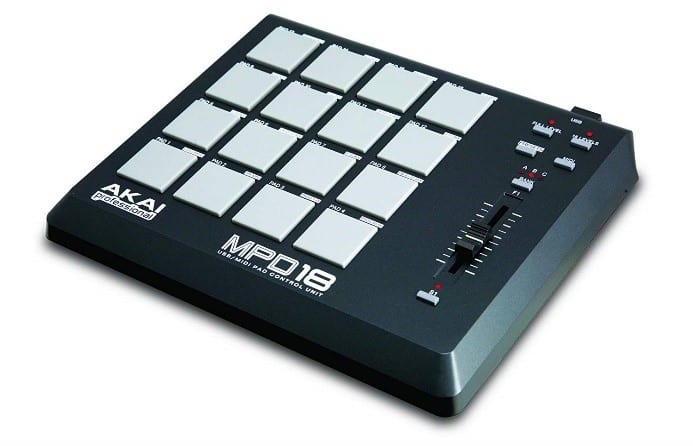
The Akai MPD18 sets out what it is meant to do with a solid set of classic features while remaining very affordable for many. It has 16 pressure pads that can reach a possible combo of 48 sounds. A device is a great option for those who are on the go since it is powered through USB. Presets are possible, and the device is compatible with PC and Mac.
Our Conclusion: By far, one of the best Midi drum pad controllers in the market today.
Pros:
- Affordable
- Very responsive
- Durable
Cons:
- Instructions need improvement
- Some sensitivity issues
Buyer’s Guide: What to Consider Before Purchase
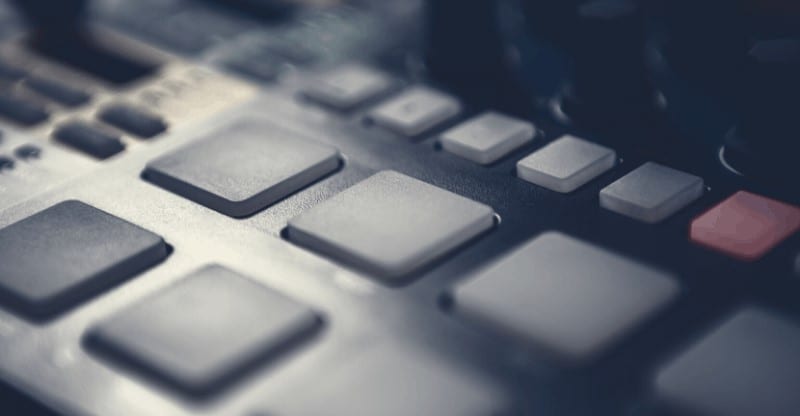
When it comes to purchasing the best MIDI drum pad controller, there are several things that you need to consider so that you will know you have made the best out of the money that you have spent. These factors are only guidelines to make your purchase worthwhile.
Pads, Knobs, and Faders
When buying MIDI drum pad controllers, always check if they have enough size to fit your fingers without hitting the adjacent pads. The pads will need to be responsive but not highly sensitive enough that it will cause disruption. The pads would also need to be soft but firm enough and should be made of high-quality materials. Most of the time, silicone is used for the pads.
Aside from pads on these drum controllers, there are also other options, such as knobs, buttons, and faders. While the modern software version is far superior, many players are still looking for that authentic experience; hence faders and knobs are highly recommended when picking up a MIDI drum pad controller.
Portability
Before you purchase the drum pad controller, you would need to find the right space to set it up. If you plan on placing it in your living room or music room or if you want to take it with you during your tour, it will most likely require the device to be portable. This also means that the durability of the unit must be considered as well. It is highly recommended to also consider the number of pads that are on the device. Some only need an 8-pad setup while others want to go big with a 64-pad setup.
Power Supply and Connectivity
This goes hand in hand with portability. Many would like to constantly be able to play or if the right inspiration comes would like to strike a tune or two at any given time; however, they are gated with the fact that the device does not have enough power supply for the device to function properly. It is always necessary to get a device that is powered through a USB cable where you can easily plug the device to power it up.
Price
It comes without saying that price will always be a determining factor whether a product is worth buying or not. However, there will also be instances that the features overshadow the high price. This is where bargaining should happen.
You can begin by asking yourself if the features are highly worth it or sought after for you as a performer or producer for you to take the risk for the price? If not, then it should most likely encourage you to seek other brands that can cater to your needs.
Aside from these factors, there are still personal considerations, such as features that will need to be assessed first before purchasing the said product. Software compatibility is another factor that should be considered, but it would still depend on the user. However, there are MIDI pad controllers out there that cater to different consumers.
Final Conclusion
What we highly recommend is the Akai MPD60 for its durability and easy to understand interface and the Arturia BeatStep, which offers different features all in one device.
A solid drum pad controller would allow its users to explore different sounds and create unparalleled music. As technology further advances, there will be better options for a good controller that hits all the requirements. Keep in mind that budget, compatibility, portability, and connectivity should be met first when you are looking for a great MIDI drum pad. Once you find the perfect one, you will surely be hooked with its features.

